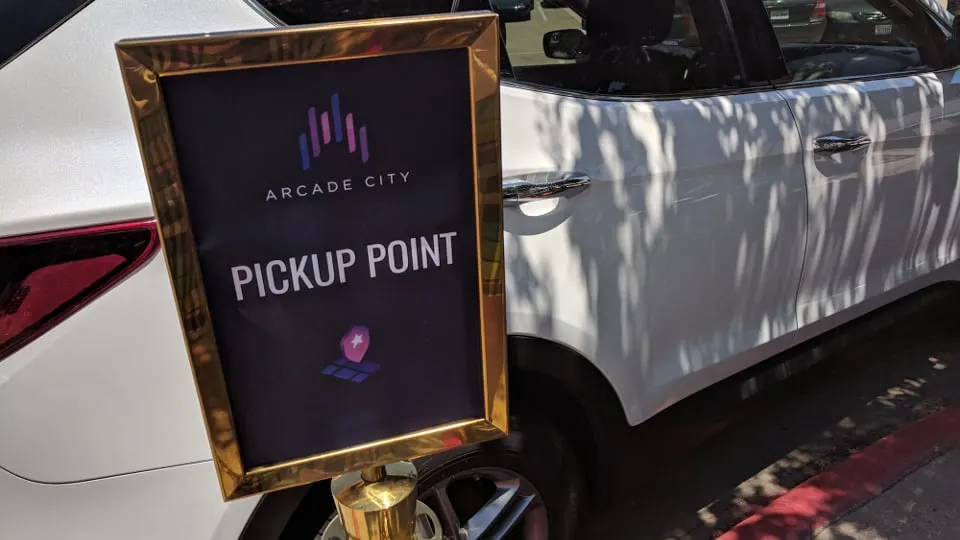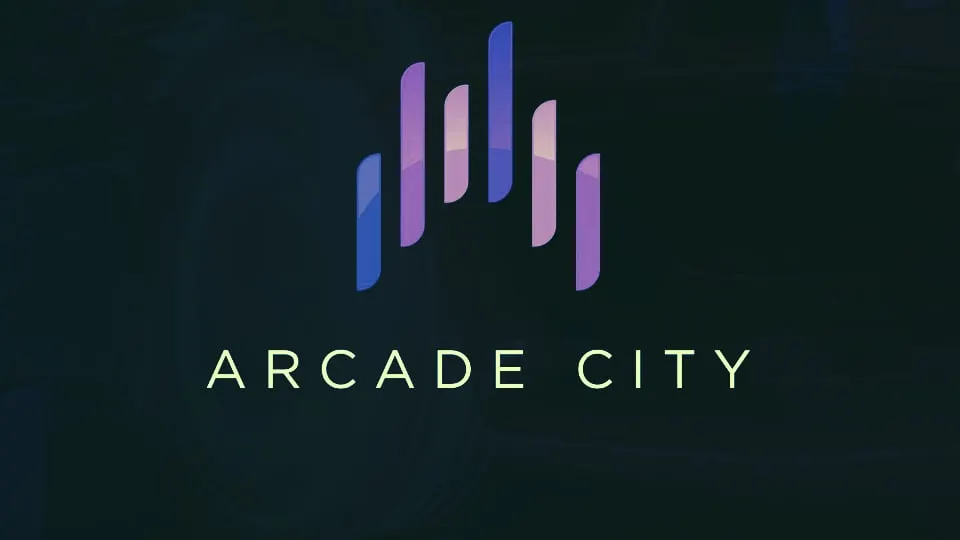You launch your Arcade City mobile app and send out a ride request to the network. Multiple drivers respond and compete for your fare. You choose your driver and connect directly—via a call or text—and set the terms: agree to a price and a method of payment (fiat, crypto or credit card) and you’re on your way.
If it sounds a little more complicated than Uber, it’s because there's something far more sophisticated at play here:
Arcade City is a decentralized company, run by its drivers who self organize into peer-to-peer "guilds" and tokenized via the Arcade Token (ARCD), an ERC-20 coin. The company itself makes virtually no money off transactions within its marketplace, with all revenue going almost entirely to the drivers. And the $1 million raised from SAFE notes and its token sale was used to build its current network.
Founded in December 2015 by a former Uber driver, the Austin, Texas-based startup is on a mission to disrupt the rideshare industry and its forerunner Uber, and create a decentralized, self-governing marketplace that engulfs the entire sharing economy. Having gained a foothold in the Austin rideshare market, the Arcade City peer-to-peer marketplace—where participants transact in cash, crypto, breakfast tacos, or anything else—is moving into other parts of the collaborative economy: everything from home rentals and grocery deliveries to “peer-to-peer pest control.”
Step into the Arcade
For now, the company digitally distributes its Arcade Tokens as rewards to early adopters and is preparing “for a broader token financing in January.” But despite previous plans and numerous reports to the contrary, its service currently does not rely on any blockchain technology.
That said, with plans for “unstoppable ridesharing” and, ultimately, a global marketplace for “peer-to-peer everything,” Arcade City is contemplating a move to blockchain technology—once the tech is ready for primetime. In the meantime, Arcade City’s CEO and founder, Christopher David, says the company isn’t waiting around for the technology to catch up to the scale it requires.
Arcade City is no Sunday driver. It has plans. Big plans. And the wheels are already in motion.
"Wouldn't it be great if you had a one-stop, [peer-to-peer] shop to have nearly any service provided to you?" he posits. While Arcade City may have established "the world’s first and only peer-to-peer, ridesharing network that is owned and operated by its drivers," it's only just getting started. It's built its current network in large part by focusing on “people first” and the technology second. In doing so, Arcade City has generated a little something that most blockchain-based services today only dream of: users—actual, living, breathing customers.
In May 2016, Arcade City went “all in” on Austin—along with at least 10 other competitors—when Uber and Lyft temporarily pulled out in protest of a local city ordinance that would have required their drivers to undergo fingerprinting as part of their background-check process. Just over two years later, the ridesharing giants are back in town after overturning the fingerprinting requirement at the state level. And only one for-profit challenger to their rideshare empire remains: Arcade City. “We are a cultural institution of Austin,” David says.
“If you’re a girl getting out of a club at 2am, do you want to roll the dice that Uber’s algorithm isn’t going to pair you with a creeper who now knows where you live?” Christopher David, Arcade City’s CEO and founder
Arcade City currently boasts a user base of approximately 42,000 very loyal customers in Austin. It prides itself in creating a genuine sense of community—a “cooperative vibe” among its users unlike that of any other sharing-economy network. “You have only to get into the front passenger seat of an Arcade City car to see the vibe happening,” says COO David Nayer, the “dominant author” of the company’s whitepaper. “This is a shared, mobile, party experience, where people are respectfully engaging with each other and come to know each other as part of a village.”
Nayer, who previously held senior positions at Booz Allen Hamilton and Dell, says the Arcade City experience could not be more different than that of Uber, where people are “de-animated” and turned into “buttons on an app.” In fact, in Austin, Arcade City users don’t even use the company’s mobile app at all—they connect over the “extremely low-tech method” of a Facebook group, according to David.
The irony of a decentralized network thriving on a centralized platform like Facebook isn’t lost on David, but he defends his company’s current reliance on the social network, pointing to Facebook’s development of a “rudimentary web of trust” and the company’s need to start “where the consumers are” and “people are connected.” While Arcade City would prefer to transition its users away from Facebook and onto its mobile app or web property, likely making use of its ARCD token as an incentive, David says he is more concerned with respecting and preserving the social relationships that have formed among members of their Facebook group.
“Yes, absolutely, the theoretical Ethereum-based trust system is going to be better. Everyone agrees with that,” he says. “But I don’t see anyone who talks about those things active in the marketplace today. I don’t see any of those people providing safe rides for people or having drivers make a living.”
For David, empowering drivers is no afterthought. He founded Arcade City on two basic principles: allowing drivers to set their own rates, and permitting them to build and maintain their own recurring customer bases—both of which Uber expressly prohibits in its terms of service. The freedom drivers are afforded is the very reason why, he claims, Arcade City outperforms every other rideshare in the business, including other decentralized rivals like SnagRide, Ridecoin, and DACSEE, in terms of “driver retention, driver earnings, and cost efficiency of the network.”

Jennefer Gallenberger, who has driven for Arcade City in Austin for most of the last two years, says she enjoys the direct contact and relationships she is able to build with her customers. Gallenberger adds that she views her engagement with Arcade City as a “business opportunity” and appreciates the flexibility to negotiate other services, like food and grocery delivery, and solicit clients for her pet-sitting business.
David says top drivers operating under the Arcade City banner earn roughly two to three times more than they previously made with other rideshares. The company has a 92 percent driver-retention rate, he says, as opposed to Uber which loses upwards of 90 percent of its drivers on a yearly basis. “Drivers absolutely love driving for Arcade City,” David boasts. And why wouldn’t they? In Arcade City, the players write the rules of the game.
What makes this Arcade decentralized? Co-op mode
Within the Arcade City framework, drivers are able to establish their own autonomous, cooperative organizations called “guilds.” Each Arcade City guild operates as a singular, self-governing entity complete with its own charter and unique set of governing principles.
For example, within the last year, the Austin guild collectively decided to move away from the “set your own rate” policy for its drivers and instead impose a flat $2 per mile rate. Drivers who belong to the Austin guild must adhere to the policy as a condition of their membership. But drivers operating independently—like Arcade City’s “lone wolf” in rural Iowa—do not.
While the Austin guild is currently Arcade City’s only operational cooperative subgroup, David says he expects this to change with the release of its latest mobile app version. Once up and running, he anticipates “multiple guilds” operating in Austin alone in the next six to 12 months. “We want to create an open marketplace of these guilds that are empowered to set their own policies.”
Future guilds could, in theory, decide to pool their resources and require that a percentage of revenue generated from rides would go to a specified fund such as “puke insurance” (against drunk passengers befouling the backseat) or a distributed source of steady income for all members. “This is miles beyond anything that anyone else is even considering in the rideshare, and even decentralized rideshare, industry,” David says.
A lack of uniformity within the network is a natural consequence of decentralization, and something Uber and other centralized sharing-economy companies don’t have to confront. For David, Nayer, and the rest of the Arcade City team, the role of the company will be to provide and facilitate “a community and a context for providing clear and transparent information to both sides” of any transaction on the network. In other words, Arcade City will make sure the rules of the game are clear for all players, and the rest is up to them.
“I think a real user application that’s committed to a blockchain protocol right now is actually being irresponsible in some way,” David Nayer, Arcade City's COO
Blockchain would be the “logical” technology to use for ensuring claims are valid and payouts happen in a timely manner, Arcade City’s CEO admits, but it would have to be a protocol “that can handle a lot of transactions per second.” And while blockchain would also be ideal for determining the governance structures for each guild, David doesn’t believe it’s “mission critical.” What is mission critical for Arcade City is to make sure “value is safely and securely—and in a trusted manner—shared between participants in a network.” And that’s where its token comes into play.
What’s an arcade without tokens?
“We are viewing the token less as a method of payment and more as a representation of a user’s stake in the ecosystem,” says David. The company plans to attach “rewards” to the token which both drivers and riders will be able to earn for “actions that grow the network.”
Plans for the ARCD token remain mostly theoretical, however, as the company enters its capital-building phase. “Right now the token is in private sale,” explains Nayer, adding that interested parties can currently only trade ether for it as their way in. He says the token is available for “people who want to stake and support the economy” and is already being used to stake certain projects.

For example, an Arcade City “patron” could use ARCD to stake an investment in the development of an Arcade City guild in a new jurisdiction. Patrons buy tokens and that turns into cash that Arcade City Inc. will use to underwrite the specified project. Nayer says Arcade City Inc. plans to function as custodians of this process for the next four years. After that, the company hopes to get completely out of the way, and let the community take care of the rest.
Nayer adds that ARCD has already been awarded to “folks who have helped build the economy” and the company plans to increasingly offer "more and more sale” of it as it heads towards a larger scale. While the token will be used for “membership and voting” rights within the economy, the company doesn’t expect Arcade City users to necessarily transact in it.
“We’re not using that token to pay for rides,” he says. “For me, that’s burning the piano.” Nayer says Arcade City customers are accustomed to paying any way is most convenient—cash, credit, or, whatever, really. “There’s a guy in Austin who’s a chef who pays his driver in breakfast. He’s actually competed for by different drivers, because it’s a pretty awesome breakfast.”
David echoes Nayer’s sentiment and notes that the majority of Arcade City’s repeat customers are in the service industry—servers, bartenders, dancers—and most prefer to pay in cash. “People love paying in cash, and Arcade City is the only rideshare that allows that. These people don’t want to pay in fucking tokens.” David takes it a step further and says that any company trying to enforce payments in tokens is “completely disconnected from the reality of how the rideshare industry” actually works.
In fact, he says anyone talking about “tokens” without also addressing the “basic trust issue” among real people that all sharing-economy projects face, is missing out on the bigger picture.
Trust in a trustless system
The decentralized nature of the network doesn’t come without its drawbacks, says Gallenberger. While rare, it isn’t unheard of for freeloading riders to skip out on the bill. She adds that there are “multiple layers in confirming the ride” and that the process is much slower compared to traditional rideshare services.
“Costs and wait times aren’t really our selling point,” David admits. Arcade City can’t compete with Uber’s “super algorithm” and doesn’t pretend otherwise. “What we have is a friendly face that’s reliable,” he says, as well as the ability to give consumers greater choice. In Arcade City’s model, riders can choose their drivers.
“If you’re a girl getting out of a club at 2am, do you want to roll the dice that Uber’s algorithm isn’t going to pair you with a creeper who now knows where you live?” David says Arcade City provides consumers a level of choice that other models simply don’t support, adding that, currently operating on a public feed of 42,000 people, anyone caught trying to cheat the Arcade gets “handled” by the community immediately.
It’s this broader sense of community that the company believes solves the biggest problem decentralized rideshares face: “How do you convince a person to get into the car of a potential stranger, and feel comfortable with that, when they know that there is no central intermediary to complain to?” David is convinced Arcade City has settled this organically through its community building, suggesting that participants in its marketplace have the added benefit of knowing their help requests won’t be filed as “support tickets to some outsourced HR” but handled by “friends of friends.”
Nayer, who also runs the Austin Center for Nonviolent Communication, knows a thing or two about cooperation. He believes strongly that the Arcade City model is not only built to scale but that cooperation is actually “the principal driver of the scaling.”
“Platform cooperativism is about how to get a co-op succeeding, and you can look to models like a food co-op,” says Nayer, who belongs to the Wheatsville Food Co-Op in Austin, one of the most successful food co-ops in the country. “Platform cooperativism is using technology as the unifying force, but within a decentralized model like Arcade City, it happens at the city level and it happens at the guild level,” he says.
When you solve the problem of trust in a peer-to-peer transaction, especially for perhaps the most difficult vertical to solve—getting into a stranger’s car late at night—you can solve it for anything you can imagine that can be decentralized. Christoper David
Nayer adds that while blockchain is focused on “trustlessness,” Arcade City is more concerned with “trust building, which requires certain mechanisms to be trustable.” While anonymity is great in certain instances, he says, the sharing economy depends on people proving who they are when they interact with one another. “I want to know that the guy’s car that I’m getting into when he gives me a ride is safe.”

Arcade City’s COO says “platform cooperativism" can come in many flavors, and it doesn’t have to be on a blockchain. “For us, it’s building software in the right scale and the right places to do that,” he says. “It has to be an app that functions and it needs a backend database; it needs proper respect for authority; and it needs information protection.” Arcade City plans to “go out to the blockchain for certain pieces” as needed, and it’s not in any rush. “We’re doing those things properly.”
Nayer doesn’t mince words when considering other decentralized platforms that have raced to claim loyalty to an existing chain. “I think a real user application that’s committed to a blockchain protocol right now is actually being irresponsible in some way,” he says. “Until the throughput is there, and the scalability issues and the cost issues are addressed, you really need to be blockchain agnostic to the extent that you can.”
A shining, decentralized city on a blockchain
The company's cautious approach to new technology should not be mistaken for an aversion to blockchain per se. Quite the contrary.
While David has been very vocal in the past about the potential for Ethereum to launch Arcade City to the next level, and has since expressed his disappointment in the protocol’s scalability, he remains optimistic in Arcade City’s blockchain future.
“The vision of Arcade City is to create a truly unstoppable marketplace. It would basically just be a protocol,” he says. Arcade City, then, would be “just a way for people to connect to each other and there would be nothing anyone could do about that.” David adds that while “the technology is not there yet" both in terms of platform-readiness generally and in Arcade City’s “ability to build it," the company is “building in that direction.”
In this vein, Arcade City plans to continue investing in “internal research and development” for the Bitcoin Lightning Network, Ethereum, and Holochain, and may even build their own custom protocol that better suits its needs. After all, there are a lot of needs that need suiting.
Arcade City is intent on pursuing a “peer-to-peer everything” model. “We’re decentralizing the entire corporate sharing economy,” says David. “Airbnb, Task Rabbit—all of those are in our crosshairs.” While David notes that the branding decision to go with an inclusive Arcade City, as opposed to simply Arcade Rides, was a purposeful one, he says much of this was not pre-orchestrated. Requests for “help, there’s a big spider in my house” on the network may have started as a joke, but they persist. “Arcade City does peer-to-peer pest extermination—organically, not planned. It just happens.”
And the key to it all? Community. “When you solve the problem of trust in a peer-to-peer transaction, especially for perhaps the most difficult vertical to solve—getting into a stranger’s car late at night—you can solve it for anything you can imagine that can be decentralized,” David says.
If it ever does solve the blockchain-scalability riddle, Arcade City is confident that it will have something that “no one in the blockchain community” currently does: users, as well as a “bridge to the mainstream.”
The company plans to roll out ways to further monetize its growth and is considering introducing a “modest” transaction fee and premium subscription services to finance its expansion. It’s currently surveying the landscape of the sharing economy for opportunities “begging to be disrupted by a decentralized network.”
As Arcade City grows and scales, and big business potentially turns into big bucks, observers may be left wondering if the young upstart from the land of "keeping it weird" can keep its community vibe and cooperative spirit along for the ride.

